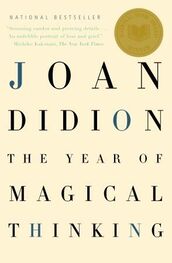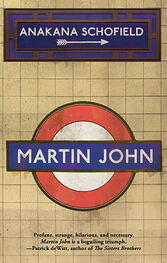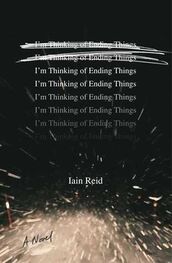Some persons claim to imagine scenes as though looking at a photograph, whereas other persons report no such vivid experiences. However, some studies appear to show that both are equally good at recalling details of remembered scenes.
See, for example, http://www.usd.edu/psyc301/Rensink.htmand http://nivea.psycho.univ-paris5.fr/Mudsplash/Nature_Supp_Inf/Movies/Movie_List.html.
This prediction scheme appears in section §6-7 of my 1953 PhD thesis, “Neural-Analog Networks and the Brain-Model Problem, Mathematics Dept., Princeton University, Dec. 1953. At that time, I had heard that there were ‘suppressor bands’ like the one in my diagram, at the margins of some cortical areas. These seem to have vanished from more recent texts; perhaps some brain researchers could find them again.
In Push Singh’s PhD thesis, [ref] two robots actually consider such questions. Also refer to 2004 BT paper.
The idea of a panalogy first appeared in Bib: Frames, and more details about this were proposed in chapter 25 of SoM. A seeming alternative might be to have almost-separate sub-brains for each realm—but that would lead to similar questions at some higher cognitive level.
I got some of these ideas about ‘trans’ from the early theories of Roger C. Schank, described in Conceptual information processing, Amsterdam: North-Holland, 1975.
Tempest-Tost, 1992, ISBN: 0140167927 .
As suggested in §3-12 we often learn more from failure than from success—because success means you already possessed that skill, whereas failure instructs us to learn something new.
See Douglas Lenat, The Dimensions of Context Space, at http://www.ai.mit.edu/people/phw/6xxx/lenat2.pdf
This discussion is adapted from my introduction to Semantic Information Processing, MIT Press, 1969.
From: Alexander R.Luria, The Mind of a Mnemonist : Cambridge: Harvard University Press, 1968.
Landauer, Thomas K. (1986). “How much do people remember? Some estimates of the quantity of learned information in long-term memory.” Cognitive Science, 10, 477-493. See also Ralph Merkle’s description of this in http://www.merkle.com/humanMemory.html. Furthermore, according to Ronald Rosenfeld, the information in typical text is close to about 6 bits per word. See Rosenfeld, Ronald, “A maximum entropy approach to adaptive statistical language modeling,” Computer, Speech and Language, 10, 1996 , also at http://www.cs.cmu.edu/afs/cs/user/roni/WWW/me-csl-revised.ps. In these studies, the term ‘bit’ of information is meant in the technical sense of C.E. Shannon in http://cm.bell-labs.com/cm/ms/what/shannonday/paper.html.
My impression that this also applies to the results reported by R.N. Haber in Behavioral and Brain Sciences , 2, 583-629,1979.
A. M. Turing, Computing Machinery and Intelligence, at www.cs.swarthmore.edu/~dylan/Turing.html
See several essays about self-organizing learning systems at: Gary Drescher, Made-Up Mind s, MIT Press 1991, ISBN: 0262041200; Lenat’s 1983 “AM” system at http://web.media.mit.edu/~haase/thesis/node52.html; Kenneth Haase’s thesis at http://web.media.mit.edu/~haase/thesis/; Pivar, M. and Finkelstein, M. (1964) in The Programming Language LISP, MIT Press 1966; Solomonoff, R. J. “A formal theory of inductive inference,” Information and Control , 7 (1964), pp.1-22; Solomonoff, R. J. “An Inductive Inference Machine,” IRE Convention Record, Section on Information Theory, Part 2 , pp. 56-62, 1957. Also, see his essay at http://world.std.com/~rjs/barc97.html. In recent years this has led to a field of research with the name of ‘Genetic Programming.’
Technically, if a system has already been optimized, then any change is likely to make it worse until one find a higher peak, some distance away in the “fitness space.”
See §2.6 of Frames, §27.1 of SoM, and Charniak, E. C., Toward a Model of Children’s Story Comprehension. ftp://publications.ai.mit.edu/ai-publications/pdf/AITR-266.pdf
There has been some recent progress toward extracting such kinds of knowledge from large number of users of the Web. See Push Singh’s ‘OpenMind Commonsense’ project at http://commonsense.media.mit.edu/.
John McCarthy, “Programs with Common Sense,” in Proc. Symposium on Mechanization of Thought Processes , 1959. Reprinted in Semantic Information Processing, p404.
People sometimes use ‘abstract’ to mean ‘complex’ or ‘highly intellectual’—but here I mean almost the opposite: a more abstract description ignores more details—which makes it more useful because it depends less on the features of particular instances.
See Elizabeth Johnston’s notes on “Infantile Amnesia” at http://pages.slc.edu/~ebj/IM_97/Lecture6/L6.html
In each cycle of operation, the program finds some differences between the current state and the desired one. Then it uses a separate method to guess which of those differences is most significant, and makes a new subgoal to reduce that difference. If this results in a smaller difference, the process goes on; otherwise it works on some other difference. For more details of how this worked, see Newell, A., J. C. Shaw, and H. A. Simon, “Report on a general problem solving program,” in Proceedings of the International Conference on Information Processing . UNESCO, Paris, pp. 256-64. A more accessible description is in Newell, A., and Simon, H. A., “GPS, a program that simulates human thought,” Computers and Thought , E. A. Feigenbaum and J. Feldman (Eds.), McGraw-Hill, New York, 1963.
See Allen Newell and Herbert Simon (1972), Human Problem Solving, Prentice Hall; (June 1972), ASIN: 0134454030. Also, see a problem-solving architecture called “SOAR.”. [Ref.]
See A. Newell. J. C. Shaw, and H. A. Simon, “A variety of intelligent learning in a general problem solver,” in Self-Organizing Systems , M. T. Yovitts and S. Cameron, Eds., Pergamon Press, New York, 1960.
In Nicomachean Ethics (Book III. 3, 1112b). This appears to be a description of what today we call ‘top-down search.”
This was written before ‘security’ began to be imposed on trains.
See Peter Kaiser’s www.yorku.ca/eye/disapear.htm. [Also, see §§Change-Blindness] However, there are some signals that do not ‘fade away.’ Because we also have some additional sensors that evolved to keep responding to certain particular harmful conditions. [See §§Alarms.]
Roger Schank has conjectured that this may be one of our principal ways to learn and remember—in “Tell Me a Story ” Charles Scribner’s Sons, New York, 1990.
There are more details about this in my essay at /web.media.mit.edu/~minsky/papers/MusicMindMeaning.html
Читать дальше






